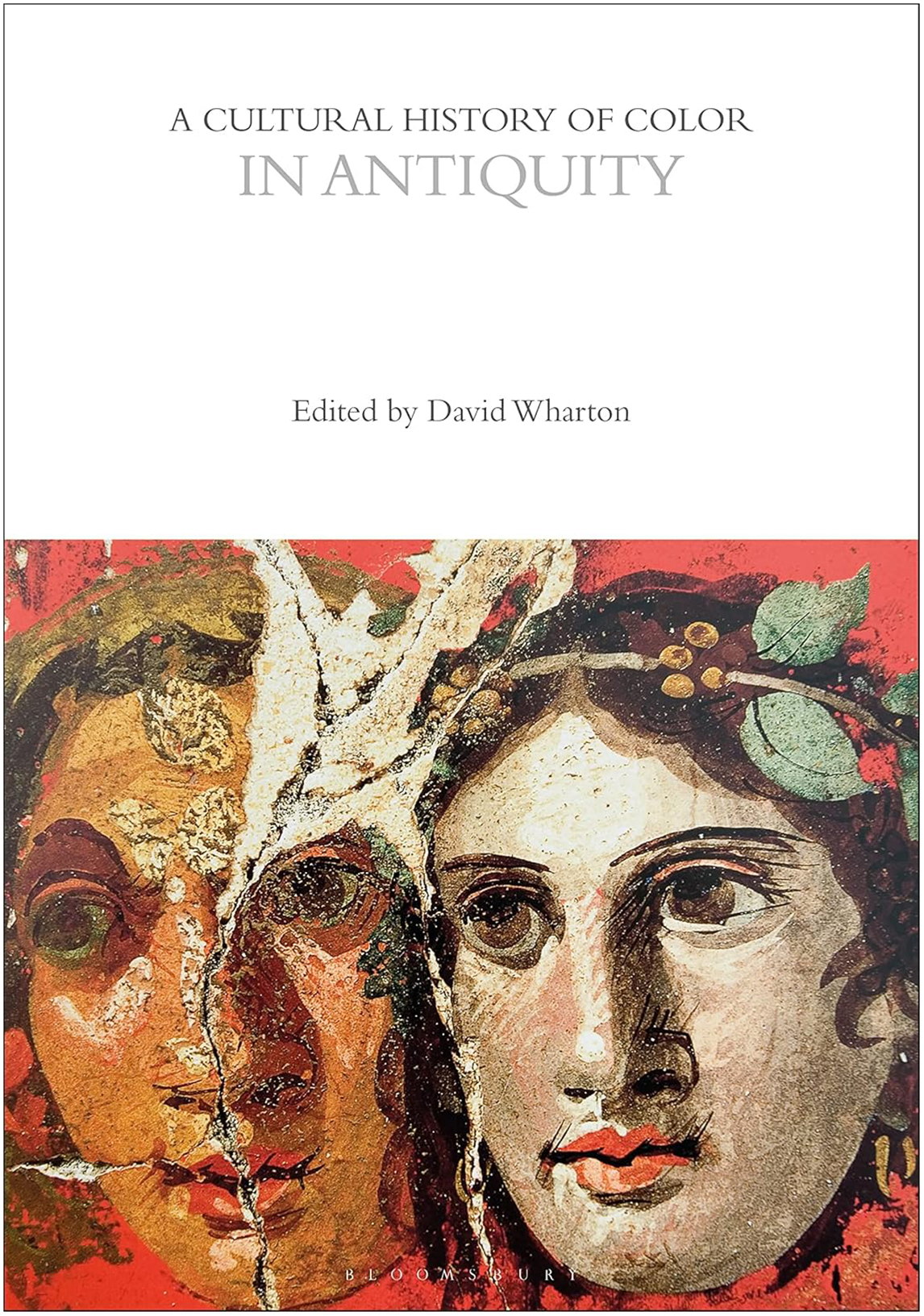
The Cultural History series, published by Bloomsbury, provides an invaluable resource for teachers and scholars in a wide range of areas, such as magic, sexuality, and education, to name but a few. This book, on colour in antiquity, is the first volume in a series of six. The book is divided (as each of the volumes are) into ten chapters: Philosophy and Science, Technology and Trade; Power and Identity; Religion and Ritual; Body and Clothing; Language and Psychology; Literature and Performing Arts; Art; Architecture; and Interiors and Artifacts. This review will aim to give an overview of the key areas covered in the book, along with an insight into how it can complement teaching, particularly at A Level.
The editor admits in his introduction that the study of colour in antiquity will be inevitably limited, not only by the lack of evidence, with which we will all be familiar but also because the period covered in this book (3000 BC–500 AD) is longer than all the other volumes combined, and the geographical area discussed is equally expansive. The introduction presents the key ideas that will re-emerge throughout the book, such as use of colour terms in antiquity (‘the ancient colour problem’) and ongoing archaeological methods of identifying colour, amongst other things. Each chapter gives a well-balanced and well-evidenced account of scholarship in its relevant area, providing a thorough yet concise exploration.
From a teaching perspective the book is easy to navigate and dip into when, for example, teaching about the decoration of the Parthenon or use of colour language in Homer and Virgil, both of which are studied.
The Philosophy and Science chapter was a particularly good place to start in terms of raising the reader’s awareness about how colour terms are ‘different’ in antiquity, and there is detailed discussion about how it has been thought this may reflect actual differences in the ancient perception of colour. This is coupled with a study of philosophical theories of perception, such as those of Empedocles and Democritus. As these ideas are revisited regularly throughout, the chapter acts as a good foundation for what follows. Later chapters turn the study to more concrete grounds, with interesting details about how colours were produced and how this can help us to track trade routes and interactions between different parts of the ancient world. There is discussion about dyes and pigment production as well as fascinating nuggets such as the fact that, in Pompeii, what was originally yellow paint turned red during the eruption of 79 AD.
In the Religion chapter there is an extended study of the emphasis in antiquity on shade, intensity, and luminosity more than hue, particularly when it comes to language about the gods. I found this discussion quite complex and did not finish it with a full understanding, but I have made a note to return to it and am sure it will further enhance my teaching of Greek Religion.
Lewellyn-Jones does well in the Body and Clothing chapter to incorporate Barthes’ terminology of deciphering ‘written garments’ to help us reach the ‘real garment’, and in Language and Psychology, the complexity of colour terms is studied further, with detailed exploration of terms such as chloros and how this appears to be used to cover a range of hues as well as be translated into ‘fresh’. For students of Greek Theatre, there is an interesting discussion of colour on theatre masks and scenery, helping us to understand how much messaging there is on the stage not only through words and actions, but also the colours used.
The final chapters focus on the material sources – Art and Architecture and Artefacts – cementing earlier ideas about how colour in antiquity is linked inseparably with material, and how this is often key to our understanding, particularly when considering uses of materials such as ivory, gold, and bronze, which is described as ‘metallic polychromy’, demonstrated most clearly in Pheidias’ statues. There was much new information for me as a teacher of sites such as the Acropolis and Delphi, and it was exciting to read about the widespread use of bronze and gold leaf on temples and glass beads in the capitals of the Erectheum for ‘reflective and sparkling colour effects’.
The final discussion, on artefacts, returns to common themes throughout the book such as the importance of light and dark in ancient colour terms, the inseparable nature of colours from their material, and how colour can be symbolic. There are new ideas here, too, such as the link between the colour of objects and sympathetic magic, the fashion for the use of colourless glass to display wealth and status, and development of colour coding for tableware in Roman provinces.
I have already found that I am talking about this book in my lessons, whether it be discussing the limited colour terms in Homer, the dominance of purple everywhere, or trying to help my students understand what the visual experience of the ancient world may have actually been like. This book will work well alongside many new digital resources which make the colour of the ancient world more accessible, such as the Virtual Reality Oracle of Dodona or Mr Hinde’s Assassin’s Creed walkthroughs, enabling the more able students to build up a nuanced and colourful picture of the ancient world and help teachers blend new knowledge with digital resources to encourage further depth of enjoyment and understanding.


